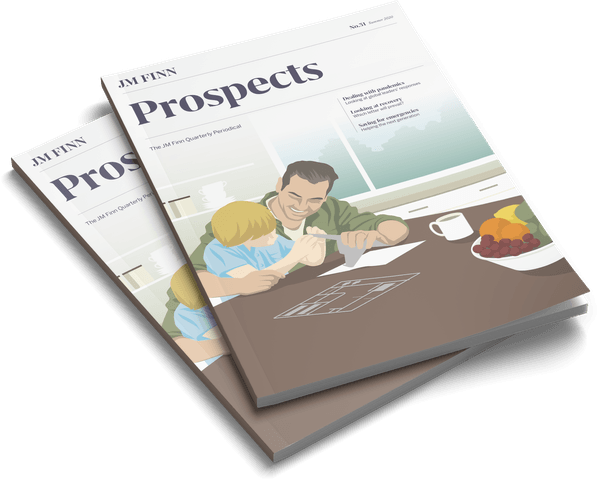One of the things economists do to have fun is pick letters of the alphabet that they think will describe the trajectory of economic growth from recession to recovery. The Covid-19 recession is the worst this side of WW2 and sufficiently bad to make comparisons with the 1930’s Depression. When the first signs of the slump appeared, many economists favoured a V-shaped recession. The IMF and President Trump still do but as time has gone on, economists have become more circumspect about where the global economy is heading. So now, a U-shaped economy seems to be the flavour of the day for those who do not expect an early vaccine and anticipate a second wave of infection.
Pessimists look for an L-shaped recovery, although it is not really a recovery just stagnation. Sports logos such as the “Nike Swoosh” have also been drafted to describe a slow but sustained recovery. Will it be a “Swoosh”? Well, just think when will be the next time you go to a pub, restaurant, a football match, the theatre, opera or go on a foreign holiday. And then factor in “staggered” returns to work, employers figuring out they need less staff after the “work at home” experience as well as travel restrictions, mandatory vaccinations and biometric surveillance. You get the picture. The bottom line is that things will be very different which is hardly the greatest-ever insight.
The last financial crisis was over a decade ago and it seems that since the 1987 crash, we have one every ten years or so. In the last ten years, the major economies never really got off the ground despite radical monetary policies such as QE, zero rates and then negative rates. Indeed, many economies were actually in difficulties last year; such as Germany that crumbled in the face of a contraction in world trade and a “hard landing” for China, one of its main export markets. Japan slumped in the final part of last year after a mis-judged increase in the consumer tax last October. Amazingly, in the UK, the economy had actually outperformed Germany since the 2016 referendum, though the media has a curious habit of always knocking Britain. There is no good news only bad news.
The surprise for the pessimists might be a much higher stock market in all the major markets.
The post-global financial crisis rescue policies did little to recover pre-crisis rates of economic growth. What they did was to inflate financial asset prices to record highs, both stocks and bonds. Official measures of CPI undershot the 2% official targets though many readers might be forgiven for thinking the actual cost-of-living is a lot higher. If such policies did little to revive the real economy first time around, why would they necessarily work second time around? And will it take another decade before any recovery fizzles out and we run into another (debt) crisis?
Equity markets, after the fastest bear market decline, staged the fastest bear market rally.
The other side-effect of cheap money was a build-up in debt especially in the corporate sector with the US and China being the main culprits. Now, the Covid-19 crisis is resulting in a massive surge in government debt and borrowing to address the cost of the slump and of tackling the pandemic. Global fiscal expansion is three times that undertaken in the 2007-2008 crisis, while central banks having mostly run out of interest rate ammunition, are expanding their balance sheets to record highs. Forget “Helicopter Money”, this is really “Airbus Money”. Most of the major economies will end up with government debt-GDP levels in excess of 100% which will become a major challenge at some point. Will it be the time-honoured method of reducing debt through higher inflation, will it be debt monetisation (already happening) or debt-write offs, or higher taxes?
Wall Street heavyweights recently warned about over-valued US equity markets and the end of “The Everything Bubble”. Equity markets, after the fastest bear market decline, staged the fastest bear market rally, up 30% from the 23 March lows. Some Wall Street heavyweights warn of a deflationary super-cycle while others worry about “The Great Monetary Inflation”. At the moment bond investors’ inflation expectations are most decidedly on the side of the deflationists and a slide towards “Japanification.” Japanification might spread culturally. Might we end up bowing in the style of the Japanese tradition instead of shaking hands? However, we should be alert to the possibility of much higher inflation. It is worth noting that US M2 money supply growth (an indicator of money supply and future inflation) is already running at a 20% rate. This is higher than the peak rate in WW2 and in the inflationary 1970s. The current rate of headline US inflation is just 0.3%, which is not surprising when global demand is so weak and when oil prices have slumped considerably over the last year. Historically, strong money supply growth often translates into eventually higher inflation but investors should keep a watchful eye on the money supply numbers.
Central banks are expanding their balance sheets to record highs.
The stockmarket is often a good inflation indicator and the surprise for the pessimists might be a much higher stock market in all the major markets, especially the US and UK. Beaten up sectors like financials, cyclical stocks and real estate might make a comeback. For fixed income investors, the surge in borrowing means a steeper yield curve and could reverse the long term downtrend in market-based inflation expectations. Also watch the gold price. It is up 30% over the past year. A breach of the $2,000 level is on the cards, especially if more QE and debt monetisation undermine the value of the US dollar. And before I forget, the US Presidential Election is in November. V-shaped or pear-shaped?
Written by Neil MacKinnon, Macro-Economic Strategist
Illustration by Adam Mallett




